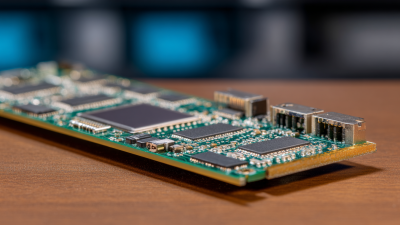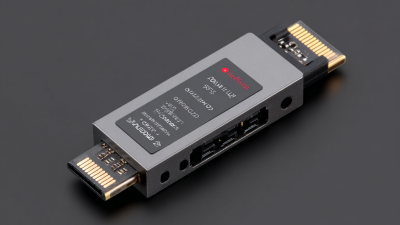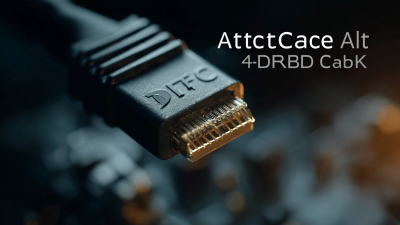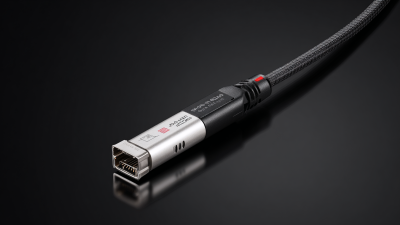Leave Your Message
In the rapidly evolving landscape of digital technology,
the 400G OSFP AOC (Active Optical Cable)
stands at the forefront of innovation, transforming data transmission capabilities across various industries.
According to the recent
"Global Market Insights Report,"
the demand for high-speed data connectivity is projected to grow significantly, with an expected
CAGR of over 20%
in the next five years. This trend highlights the necessity for efficient, high-capacity solutions that can meet the increasing
bandwidth requirements of data centers and cloud computing environments.
 Industry expert
Dr. Emily Chen,
a leading voice in optical communication technology, emphasizes the pivotal role of
400G OSFP AOC
in this digital evolution. She states,
Industry expert
Dr. Emily Chen,
a leading voice in optical communication technology, emphasizes the pivotal role of
400G OSFP AOC
in this digital evolution. She states,
"As organizations strive to enhance their network capacity and performance, 400G OSFP AOC technology will be crucial in providing the speed and efficiency needed for tomorrow's applications."Her insights underline the significance of adopting such advanced technologies to stay competitive in an increasingly digital world.
The emerging applications of 400G OSFP AOC (Active Optical Cable) technology are set to reshape the landscape of high-speed networking in 2025. As networks evolve towards higher bandwidth demands, the OSFP format, which supports 400G connectivity, is becoming a vital solution. Notably, the integration of 1.6-terabit technologies showcases the next leap in data transmission capabilities, allowing for dense data centers and enhanced cloud services.
As reported, OFC 2025 has unveiled numerous innovations in optics, including advancements in digital signal processing (DSPs) and AI-enabled networks. These developments complement the deployment of 400G OSFP AOC technology, fostering greater efficiencies and optimized performance in data handling. According to industry reports, the market for optical interconnects is expected to surpass $11 billion by 2025, driven by the increasing demand for high-speed connectivity in enterprise and cloud environments.
Tips for leveraging 400G OSFP AOC technology include assessing current infrastructure for compatibility and future scalability. It's essential to invest in solutions that not only address present bandwidth needs but also anticipate future growth. Regularly updating network components to support the latest standards can significantly enhance performance and reliability. Furthermore, staying informed about emerging trends in optical technology will empower organizations to make strategic decisions that align with market advancements.

As we approach 2025, the landscape of 400G network technology is set to undergo transformative innovations, particularly with the advancements in OSFP AOC (Active Optical Cable) technology. This evolution is driven by an increasing demand for higher bandwidth and faster data transmission speeds. Companies are focusing on refining their designs, making cables lighter and more energy-efficient, reducing costs while enhancing performance. The integration of advanced materials and cutting-edge manufacturing processes is making it possible to meet the rigorous demands of modern data centers and cloud services.
Tips: When considering upgrades to your network infrastructure, evaluate the compatibility of OSFP AOC technology with your existing systems. Investing in this technology not only future-proofs your operations but also ensures a sustainable approach due to its lower power consumption.
In addition to performance improvements, innovations in security protocols are gaining prominence in the 400G network realm. With the challenge of cyber threats growing, 400G technologies are now incorporating robust encryption and enhanced monitoring capabilities to safeguard data integrity. This cybersecurity integration is critical for organizations that prioritize data security as a central feature of their network strategies.
Tips: Regularly update your security measures in tandem with technology upgrades. Establishing a routine for evaluating your network's vulnerability will help mitigate risks while you embrace the benefits of 400G advancements.
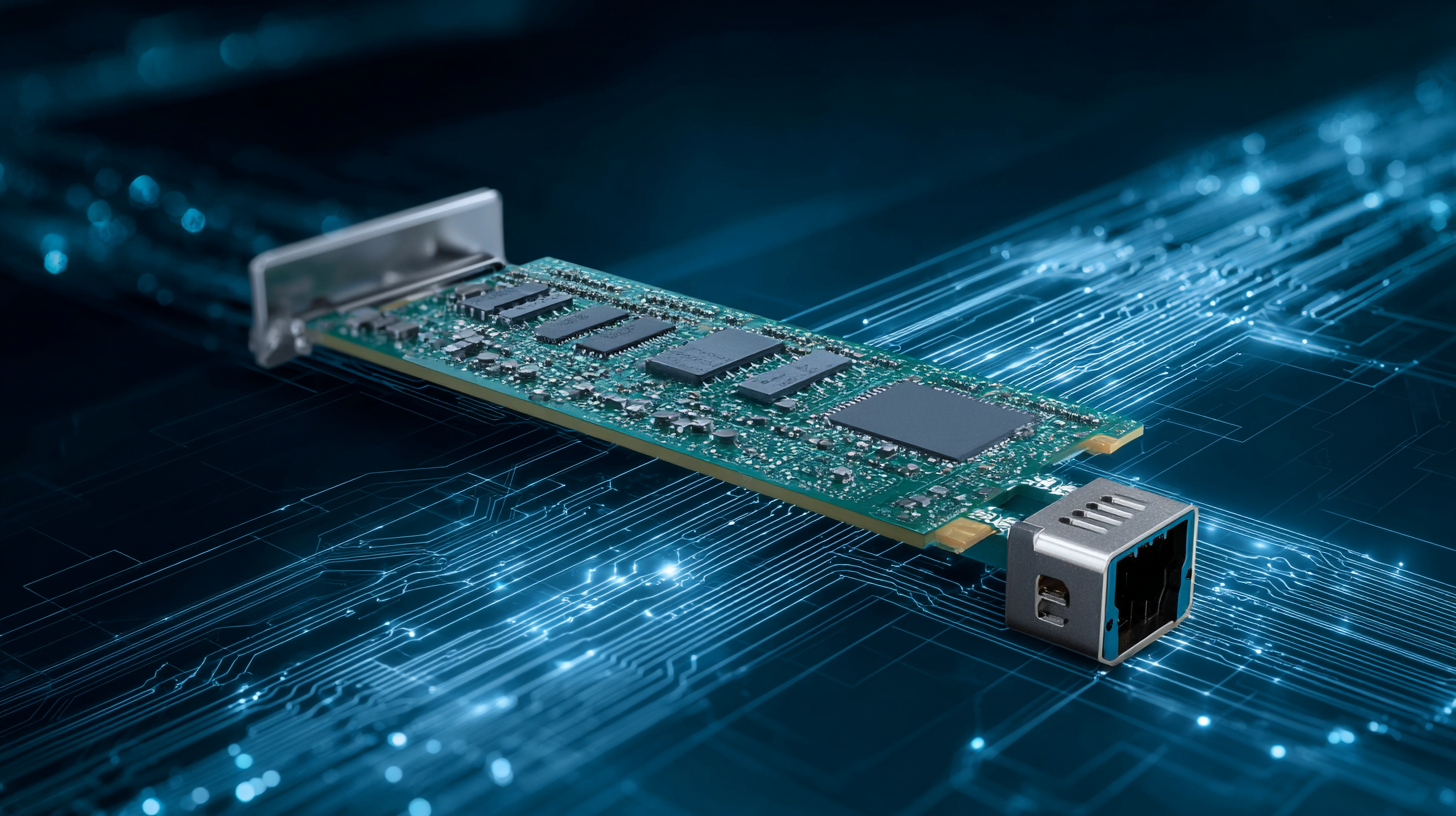 The OSFP (Octal Small Form-factor Pluggable) optical interface is gaining traction in the realm of high-speed data transmission. Compared to traditional interfaces like SFP28 and QSFP28, the OSFP design provides enhanced capacity, supporting 400G data rates while allowing for efficient thermal management and reduced power consumption. This increased efficiency makes OSFP particularly suited for data centers and high-performance computing environments where maximizing throughput is essential.
The OSFP (Octal Small Form-factor Pluggable) optical interface is gaining traction in the realm of high-speed data transmission. Compared to traditional interfaces like SFP28 and QSFP28, the OSFP design provides enhanced capacity, supporting 400G data rates while allowing for efficient thermal management and reduced power consumption. This increased efficiency makes OSFP particularly suited for data centers and high-performance computing environments where maximizing throughput is essential.
When considering the OSFP versus other optical interfaces, it's crucial to evaluate compatibility with existing systems and future scalability. OSFP connectors can accommodate higher bandwidth within the same physical footprint, which can be a significant advantage for organizations looking to upgrade their infrastructure without extensive rewiring or redesign. Additionally, the ability to daisy-chain multiple OSFP modules opens up new avenues for network configuration and flexibility.
Tip: Always check the backward compatibility of new optical interfaces with your current equipment to ensure seamless integration and avoid unexpected costs during implementation. Also, closely monitor the latest developments in optical technologies, as advancements in materials and design may influence your choice of interfaces moving forward.
The rapid evolution of AI and automation is reshaping the landscape for 400G Active Optical Cables (AOC) deployments in data centers, particularly with the introduction of advanced technologies. The latest innovation in the realm of 400G AOC is the development of 5nm CMOS PAM4 DSPs, designed to support both 400G and 800G multimode short-reach optical modules. These components not only enhance performance but also play a crucial role in optimizing power consumption, making them well-suited for applications that demand efficiency, such as AI and machine learning clusters.
Tips:
1. When considering AOC for your deployment, prioritize solutions that integrate integral drivers for improved efficiency and reliability.
2. Analyze the compatibility of new DSP technologies with your existing infrastructure to ensure seamless integration and performance gains.
As organizations increasingly leverage AI-driven processes, the demand for high-speed, low-latency connections will continue to rise. The advancements in 400G AOC technology cater to these needs, offering robust solutions that can handle the high bandwidth requirements of modern workloads while maintaining a focus on sustainability through energy-efficient designs. Ensuring that your infrastructure is ready to support these trends is crucial for staying competitive in a rapidly evolving digital environment.
| Trend | Description | Impact of AI | Automation Benefits | Expected Growth (%) |
|---|---|---|---|---|
| Increased Bandwidth | Adoption of 400G AOC technology to meet rising data demand. | AI algorithms optimize network traffic management. | Reduced latency and improved network reliability. | 30% |
| Energy Efficiency | Focus on reducing power consumption of data cables. | AI-driven analytics to monitor and reduce energy use. | Lower operational costs and carbon footprint. | 25% |
| Enhanced Security | Implementation of secure transmission protocols in 400G AOCs. | AI identifies and mitigates security threats in real-time. | Automated responses to security breaches. | 40% |
| Data Center Optimization | Integration of 400G AOC in data center networks for better performance. | AI enhances load balancing and resource allocation. | Increased operational efficiency. | 35% |
| Interoperability Solutions | Development of standards for compatibility between different AOC systems. | AI tools streamline testing of interoperability. | Faster deployment and reduced integration costs. | 20% |
As organizations increasingly adopt digital transformation strategies, future-proofing networking infrastructure has become a paramount concern. The advent of 400G OSFP AOC (Active Optical Cable) technology is poised to revolutionize how data centers approach bandwidth and connectivity. By leveraging the enhanced performance capabilities of 400G solutions, businesses can ensure that their networking infrastructure is not only resilient but also scalable to meet future demands.
With data traffic expected to surge exponentially in the coming years, investing in 400G technology offers a proactive solution to handling increased loads. The OSFP (Octal Small Form-factor Pluggable) design facilitates high-density connections while maintaining efficiency, thereby optimizing space and power usage in data centers. This scalability is critical, as organizations look to integrate more devices and services into their networks without compromising performance. Emphasizing a forward-thinking approach, businesses equipped with cutting-edge 400G technology can navigate the complexities of future networking challenges, positioning themselves as leaders in a rapidly evolving digital landscape.
This chart illustrates the projected impact levels of various digital trends in 400G OSFP AOC technology by the year 2025. The trends include an increase in network capacity, the adoption of artificial intelligence, growth in 5G networks, cloud computing dominance, and integration of Internet of Things (IoT) solutions, all of which are crucial for future-proofing networking infrastructure.
